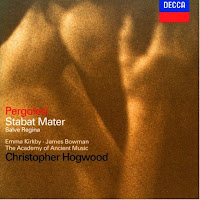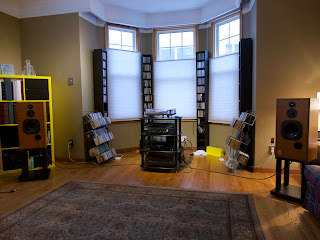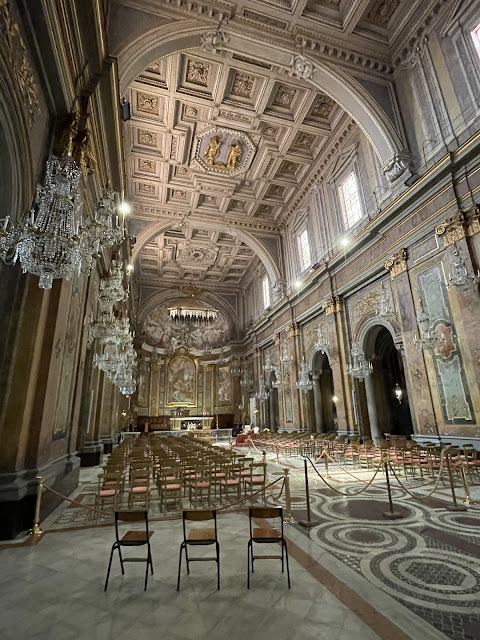A Lenten Pilgrimage
Tonight, I will lead the traditional Catholic devotion called the Stations of the Cross. The stations are a series of meditations on the journey that Jesus took from his condemnation to his burial. The Christian experience of pilgrimage is very long. From the earliest days, people wanted to travel to the places associated with Jesus' life, death and resurrection. The places associated with the apostles also became important places of pilgrimage. In Spain, even today, the shrine of St. James, Santiago de Campostela, is an important pilgrimage site.
People still follow the medieval route from Paris all the way to the shrine. There are places to stay along the route and pilgrims often meet up and become companions on the road. It is this experience of the travel that is just as important as the goal.
The Stations of the Cross became a way to travel to the Holy Land without needing to travel there, at a time when the trip was virtually impossible anyway. By taking some time in our own local parish we can travel with the Lord on his journey to Calvary. There are many different Ways of the Cross. Most use the biblical accounts of the Lord's Passion at their centre.
My own take is that these words and the prayers that go with them, are intended to bring us to a state of reflection. A little time of silence at the end of each station is beneficial, and then we share in the "travelling music" of the Stations.
Traditionally, the Latin text, the Stabat Mater is used. This is often sung in a simple chant tone in Latin or in a modern language translation. As much as the words of the meditations at each station, the music sets the reflective tone for the journey. The music helps us to recognize the element of travel, movement both physical and spiritual.
Many composers have written travelling music for the stations. Domenico Scarlatti who was an almost exact contemporary with Bach and Handel wrote one. Pergolesi and much later Antonin Dvorak. The Scarlatti and Pergolesi could find themselves into a celebration of the Stations, but Dvorak's is a monumental performance piece, like the St. Matthew and St. John Passions of J. S. Bach.
 I remember a much more contemporary recording of the Stations by New Orleans musician Aaron Neville in his distinctive falsetto-sounding voice. I think the disc is still on the shelf somewhere at the last parish I served in and my attempts so far to get another one have been in vain.
I remember a much more contemporary recording of the Stations by New Orleans musician Aaron Neville in his distinctive falsetto-sounding voice. I think the disc is still on the shelf somewhere at the last parish I served in and my attempts so far to get another one have been in vain.
The Stations are a particularly durable and flexible devotion because the meditations used and the music employed can be varied so much. Even for personal and private prayer the Stations afford hospitality to any style of praying. Silent meditation, or the recitation of common prayers at each station is just fine.
Tonight I will try to give myself over to the journey, and I hope that as we all pray together gathered in the church, we may be transported and changed so that the love Christ had for us when He made that journey may be shared with us in the way that will be most fruitful. As the Stabat Mater proclaims, Mary's love for her Son and her journey with her Son shows us the faithful love we need to long for.
People still follow the medieval route from Paris all the way to the shrine. There are places to stay along the route and pilgrims often meet up and become companions on the road. It is this experience of the travel that is just as important as the goal.
The Stations of the Cross became a way to travel to the Holy Land without needing to travel there, at a time when the trip was virtually impossible anyway. By taking some time in our own local parish we can travel with the Lord on his journey to Calvary. There are many different Ways of the Cross. Most use the biblical accounts of the Lord's Passion at their centre.
My own take is that these words and the prayers that go with them, are intended to bring us to a state of reflection. A little time of silence at the end of each station is beneficial, and then we share in the "travelling music" of the Stations.
Traditionally, the Latin text, the Stabat Mater is used. This is often sung in a simple chant tone in Latin or in a modern language translation. As much as the words of the meditations at each station, the music sets the reflective tone for the journey. The music helps us to recognize the element of travel, movement both physical and spiritual.
Many composers have written travelling music for the stations. Domenico Scarlatti who was an almost exact contemporary with Bach and Handel wrote one. Pergolesi and much later Antonin Dvorak. The Scarlatti and Pergolesi could find themselves into a celebration of the Stations, but Dvorak's is a monumental performance piece, like the St. Matthew and St. John Passions of J. S. Bach.
 I remember a much more contemporary recording of the Stations by New Orleans musician Aaron Neville in his distinctive falsetto-sounding voice. I think the disc is still on the shelf somewhere at the last parish I served in and my attempts so far to get another one have been in vain.
I remember a much more contemporary recording of the Stations by New Orleans musician Aaron Neville in his distinctive falsetto-sounding voice. I think the disc is still on the shelf somewhere at the last parish I served in and my attempts so far to get another one have been in vain.The Stations are a particularly durable and flexible devotion because the meditations used and the music employed can be varied so much. Even for personal and private prayer the Stations afford hospitality to any style of praying. Silent meditation, or the recitation of common prayers at each station is just fine.
Tonight I will try to give myself over to the journey, and I hope that as we all pray together gathered in the church, we may be transported and changed so that the love Christ had for us when He made that journey may be shared with us in the way that will be most fruitful. As the Stabat Mater proclaims, Mary's love for her Son and her journey with her Son shows us the faithful love we need to long for.

